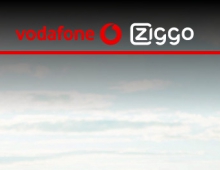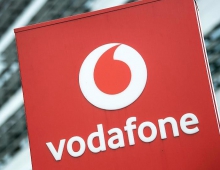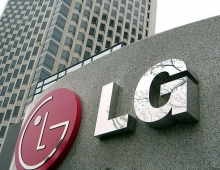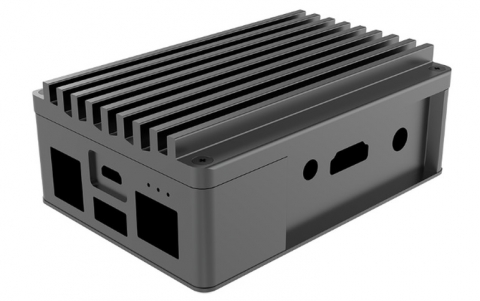
Vodafone, LG Compete On 4G Technologies
Vodafone is to trial an updated version of the mobile broadband technology HSPA, called HSPA+, while LG demonstrate its Long Term Evolution (LTE) standard at GSMA Mobile World Congress 2008.
Vodafone, the world's largest mobile phone company by revenue, said in a statement it would work with Ericsson , Huawei and Qualcomm to trial technology also known as HSPA Evolution which has the potential to deliver data throughput rates of up to 28.8 Mbps compared to the 14.4 Mbps maximum offered by today?s HSPA networks.
HSPA+ technology is designed to offer higher throughput than HSPA through its use of multiple antennae on both base stations and handsets (Multiple Input Multiple Output) as well as the deployment of a complex modulation technique called 64-QAM HSDPA. Both features will require new advanced devices compliant to 3GPP Release7 standard.
"These trials will help us to ascertain whether HSPA+ voice and data capacity enhancements will be able to leverage existing UMTS assets, including radio spectrum, to prolong the lifespan of current UMTS networks still further," said Steve Pusey, Global CTO of Vodafone. "It will complement the exploratory work we are carrying out into more long-term next generation wireless technologies such as LTE."
Last year Vodafone launched a 3G broadband service based on High Speed Packet Access (HSPA) with downlink peak rates of up to 7.2Mbps in selected hotspots within some key markets. Vodafone plans to carry out software upgrades to more of these selected hotspots to deliver up to 14.4Mbps from the end of the year as part of the existing HSPA roadmap subject to device availability.
At the same event, LG claims that its Long Term Evolution (LTE) applications are almost market-ready. LTE is a top contender to become the standard technology for 4G mobile networks. LG works in cooperation with Alcatel-Lucent and Nortel.
The wireless LTE technology LG showcases this year is two to three times faster than the wired technology it demonstrated last year. With download speeds of up to 60 Mbps and uploads at up to 40 Mbps, this LTE technology is capable of real time high definition video streaming, with no choppiness or buffer time. It is fully six times faster than HSDPA and eight times faster than HSUPA (High Speed Uplink Packet Access). This means that phones built for LTE networks could download a 700 megabyte movie in 90 seconds or a three megabyte MP3 file in 0.4 second.
The technology demonstration uses an LTE handset platform developed by LG and base station technology from Alcatel-Lucent and Nortel. The demonstration uses real mobile phone frequency ranges and components that can be further miniaturized for use in actual handsets. It also shows how LTE can be used in real-life situations like video conferencing, uploading user generated content to the internet and streaming security camera video.
LG plans to apply the LTE technology to a mobile phone in the next year.
At the same event, LG's rival Samsung Electronics introduced a handover technology, which allows users to maintain the calling seamlessly between WiBro and GSM networks. This is a solution for the European mobile carriers, who want to utilize the existing GSM networks to save the cost while establishing the WiBro network for 4G communications.
Also, it exhibited the next generation mobile system, based on the orthogonal frequency-division multiple access (OFDMA), the essential technology of the WiBro.
HSPA+ technology is designed to offer higher throughput than HSPA through its use of multiple antennae on both base stations and handsets (Multiple Input Multiple Output) as well as the deployment of a complex modulation technique called 64-QAM HSDPA. Both features will require new advanced devices compliant to 3GPP Release7 standard.
"These trials will help us to ascertain whether HSPA+ voice and data capacity enhancements will be able to leverage existing UMTS assets, including radio spectrum, to prolong the lifespan of current UMTS networks still further," said Steve Pusey, Global CTO of Vodafone. "It will complement the exploratory work we are carrying out into more long-term next generation wireless technologies such as LTE."
Last year Vodafone launched a 3G broadband service based on High Speed Packet Access (HSPA) with downlink peak rates of up to 7.2Mbps in selected hotspots within some key markets. Vodafone plans to carry out software upgrades to more of these selected hotspots to deliver up to 14.4Mbps from the end of the year as part of the existing HSPA roadmap subject to device availability.
At the same event, LG claims that its Long Term Evolution (LTE) applications are almost market-ready. LTE is a top contender to become the standard technology for 4G mobile networks. LG works in cooperation with Alcatel-Lucent and Nortel.
The wireless LTE technology LG showcases this year is two to three times faster than the wired technology it demonstrated last year. With download speeds of up to 60 Mbps and uploads at up to 40 Mbps, this LTE technology is capable of real time high definition video streaming, with no choppiness or buffer time. It is fully six times faster than HSDPA and eight times faster than HSUPA (High Speed Uplink Packet Access). This means that phones built for LTE networks could download a 700 megabyte movie in 90 seconds or a three megabyte MP3 file in 0.4 second.
The technology demonstration uses an LTE handset platform developed by LG and base station technology from Alcatel-Lucent and Nortel. The demonstration uses real mobile phone frequency ranges and components that can be further miniaturized for use in actual handsets. It also shows how LTE can be used in real-life situations like video conferencing, uploading user generated content to the internet and streaming security camera video.
LG plans to apply the LTE technology to a mobile phone in the next year.
At the same event, LG's rival Samsung Electronics introduced a handover technology, which allows users to maintain the calling seamlessly between WiBro and GSM networks. This is a solution for the European mobile carriers, who want to utilize the existing GSM networks to save the cost while establishing the WiBro network for 4G communications.
Also, it exhibited the next generation mobile system, based on the orthogonal frequency-division multiple access (OFDMA), the essential technology of the WiBro.





















